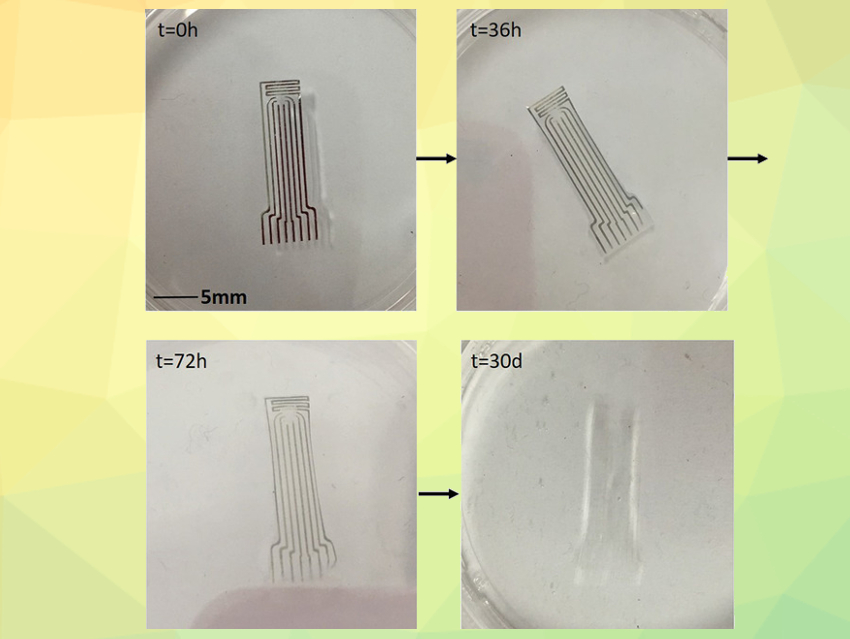The brain can be monitored using implanted electrodes, a method called electrocorticography. This can be useful, for example, to diagnose brain diseases or target treatments for epilepsy. However, the implants need to be removed in a second surgery. Bioresorbable devices that dissolve on their own could help to avoid the risks of these surgeries.
Shijian Li, Zhejiang University, Hangzhou, China, and colleagues have developed a flexible, bioresorbable electrocorticography device. The sensor (pictured top left) is made from a poly(L-lactide)/polycaprolactone composite and the metal molybdenum. It was fabricated using the polymer composite as both the substrate and encapsulation layers. The metal was applied to the substrate using sputtering through a mask. The system can measure brain activity and also contains a sensor for intracranial pressure.
The device was tested in rats and can record brain activity, e.g., during sleep or seizures. Degradation experiments (pictured) show that the system works for about five days before losing its efficacy. The entire system degrades completely in a phosphate buffer solution in about 100 days. The device is flexible and was bent 1000 times without significant changes in electrical resistance.
- Bioresorbable Electrode Array for Electrophysiological and Pressure Signal Recording in the Brain,
Kedi Xu, Shijian Li, Shurong Dong, Shaomin Zhang, Gang Pan, Guangming Wang, Lin Shi, Wei Guo, Chaonan Yu, Jikui Luo,
Adv. Healthcare Mater. 2019.
https://doi.org/10.1002/adhm.201801649




